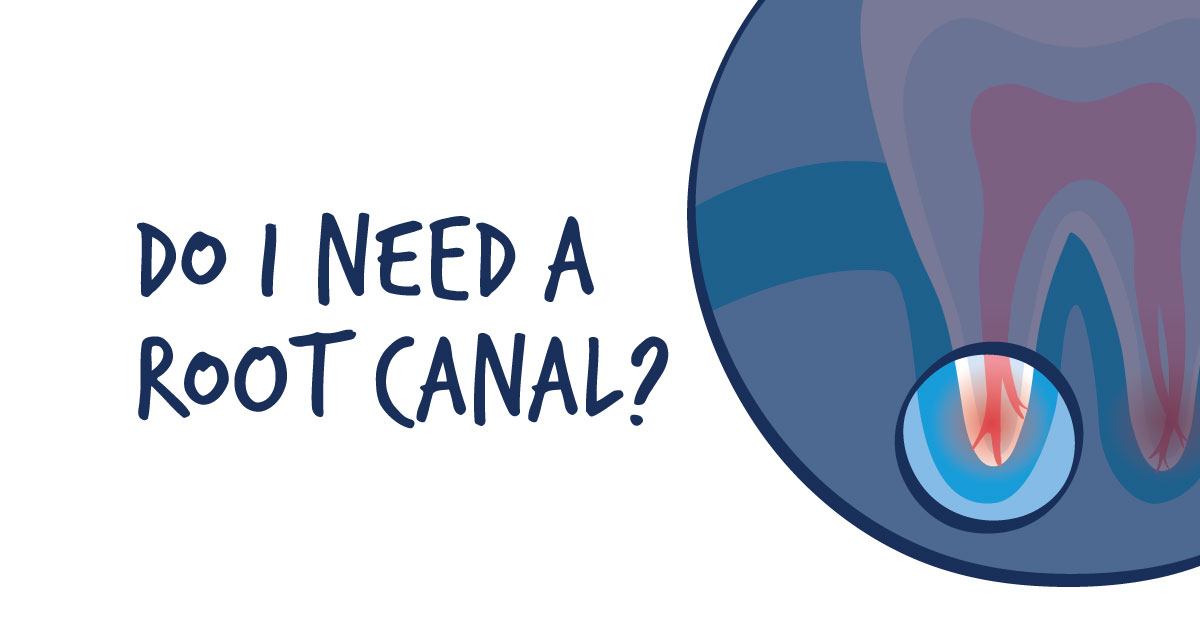If you’ve ever questioned why you should be brushing your teeth after every meal and sugary snack, the answer is plaque. Plaque starts to accumulate immediately after you eat, when saliva, food and fluids combine to create a bacteria-filled, sticky coating on your teeth.* The bacteria produces acids that start attacking tooth enamel instantly, which may also do damage to the gums.* When the plaque isn’t properly addressed, it mixes with minerals from your saliva and hardens into tartar—forming what is essentially a protective shield that allows the proliferation of bacteria on the tooth, from which you’re likely to suffer tooth decay if not removed.*
 Neglect a Cavity—Infect the Root Canal System
Neglect a Cavity—Infect the Root Canal System
Dental caries, or cavities, are tooth decay caused by plaque. Cavities that are nearer to the surface of the tooth, rather than to the root, can be easily fixed with a filling.** It’s when an untreated cavity is left to cause continued tooth decay that root canal system infection becomes a concern. But how deep can a cavity be before root canal therapy becomes necessary?
When tooth decay reaches the interior of the affected tooth—the pulp—you will typically know because the nerves in the damaged tooth pulp will send pain signals to your brain; this is a condition known as pulpitis, which is an inflammation of the tooth pulp.***
Not everyone experiences pain with pulpitis. In fact, some people don’t have any symptoms at all.*** But the typical indications that you are suffering from pulpitis are:
- Rapid onset of pain from any sugary stimulus or pressure from chewing;
- Pain caused from cold stimulus is relieved by heat, or vice versa;
- Sharp transient pain from intake of air;
- Pain referred to adjacent teeth; or,
- Pain in the ear or temple region.†
Pulpitis: Is Yours Reversible or Irreversible?
Some cases of pulpitis with limited inflammation are reversible, such as when the cavity hasn’t yet reached the nerve tissue in the pulp.*** In such instances, simply removing or repairing the cause of the inflammation can heal the tooth. For example, brushing, flossing and using a restoring mouthwash can re-mineralize and heal a newly formed cavity.***
To the contrary, severe cases of pulpitis are irreversible and will require treatment, as in such cases that are the result of:
- Undergoing a dental procedure which required a lot of dentin removal, during which the clinician got close to the tooth pulp.***
- A tooth which has required multiple invasive procedures.††
- A decrease or stoppage of blood flow to the pulp, caused by trauma or orthodontic treatment such as braces that made the tooth move faster than the blood vessels could keep up and the pulp’s blood supply gets cut off.***
- A deep cavity that has gone through the enamel and all the way into the pulp. The bacteria in the tooth decay causes inflammation in the pulp which the body tries to fight off, causing pressure to build in the tooth; the higher the pressure gets from swelling, the more the blood vessels are constricted, causing the pulp to die.*** This necrotic pulp predisposes the tooth to infection.††
Irreversible pulpitis and root canal system infections will not resolve on their own—you will need to either have the tooth extracted or you will need root canal therapy.***
The GentleWave® Procedure: An Innovative Alternative to Standard Root Canal Treatment (RCT)
How quickly you address a cavity can determine whether or not you can save your natural tooth. If you have a diagnosis of irreversible pulpitis that can be resolved with root canal therapy, choosing the GentleWave® Procedure could help save your tooth now and decrease the chance of root canal failure over time.4
The GentleWave Procedure is an alternative to standard RCT that uses a minimally invasive1 protocol to preserve more of the dentin,4 helping to maintain the tooth’s integrity and natural function while resolving the infection. A combination of advanced fluid dynamics and broad-spectrum acoustic energy removes the tissue and debris that cause infection,1,2 effectively cleaning and disinfecting the deepest, most complex portions1,2 and microscopic spaces1,2 that standard root canal treatments frequently cannot.3 And while standard RCT takes two or more appointments, the GentleWave Procedure can typically clean and fill the tooth in just one session.4
How Can You Find a GentleWave® Provider?
If you’re interested in learning more about this minimally invasive1 alternative to standard root canal treatment, use our Provider Locator to find a dentist or endodontist in your area who offers the GentleWave Procedure.
* Crest
*** Oral Answers
† Scribd
†† Merck
 Neglect a Cavity—Infect the Root Canal System
Neglect a Cavity—Infect the Root Canal System